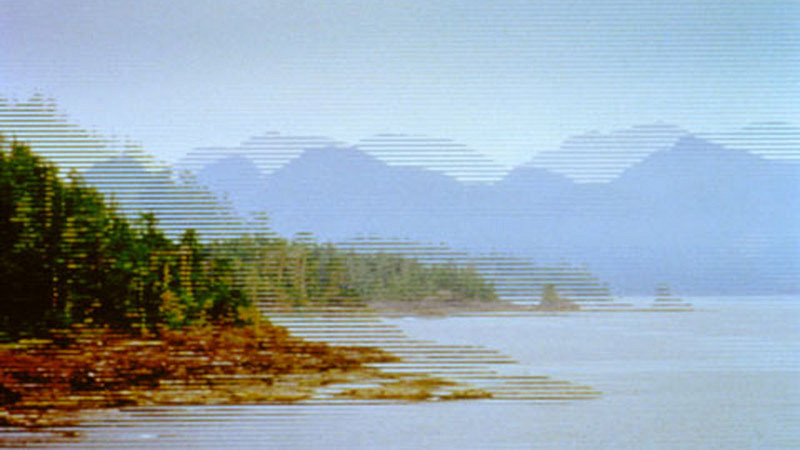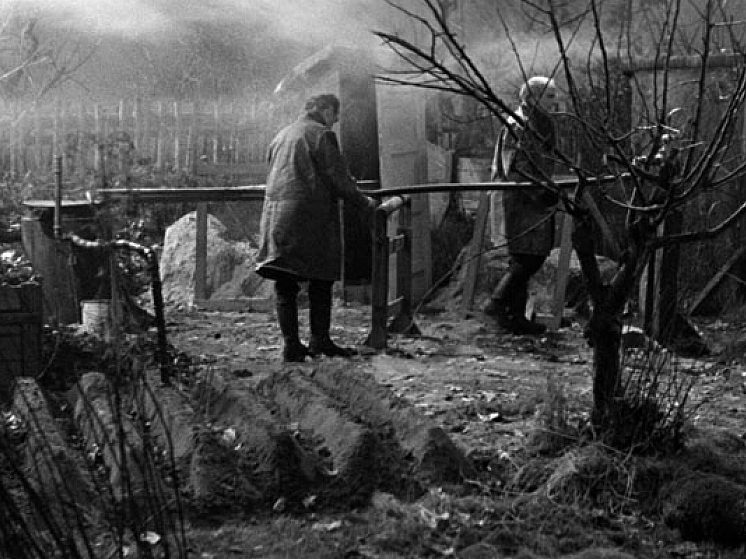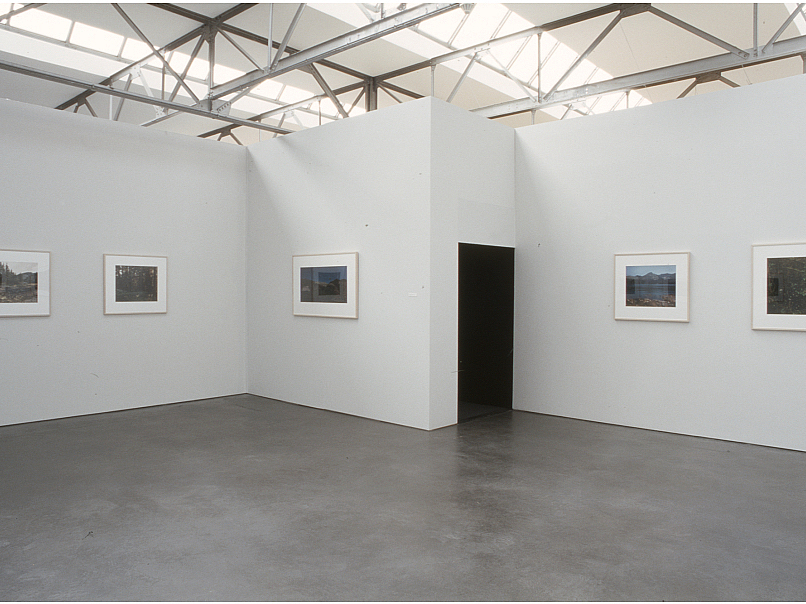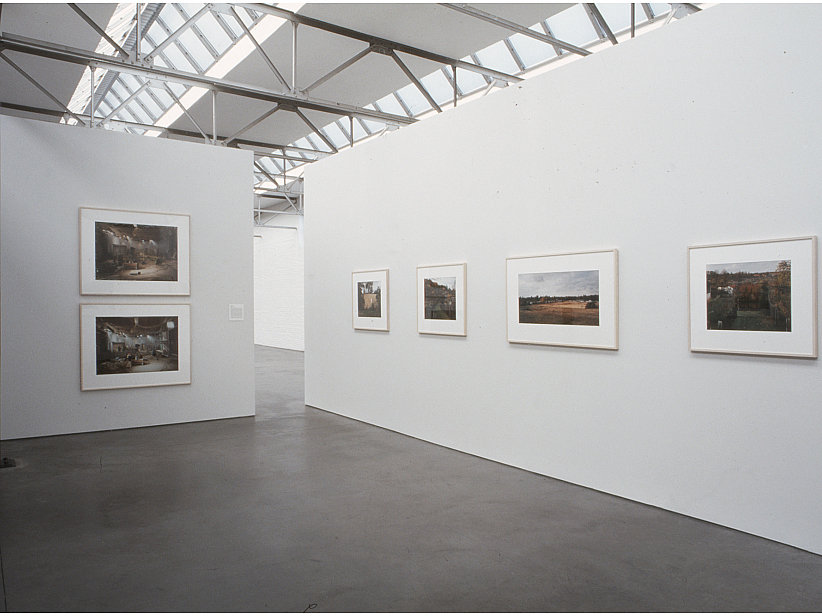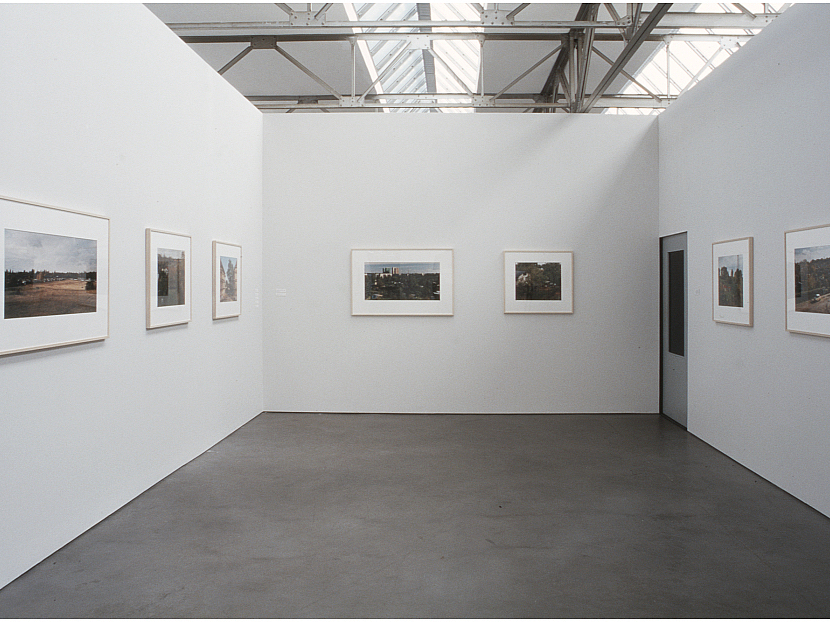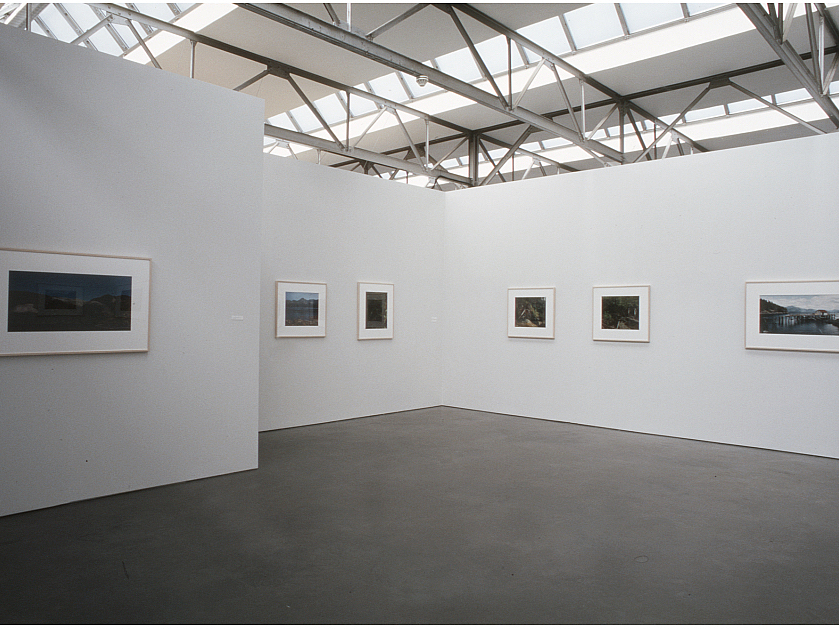The Canadian artist Stan Douglas (Vancouver, 1960) is one of the most prominent video artists today. His work has been shown at, among other events, the Documentas IX and X in Kassel and at the Johannesburg Biennial in 1997. In the Netherlands his work has been shown at such places as Witte de With in Rotterdam (1994). De Pont has in its collection photographs by Stan Douglas from The Nootka Sound Series (1996). With the exhibition of three major film and video installations and several accompanying photographic series, a broader and more complete view of his work is being given for the first time.
The work of Stan Douglas refers to photography, film and television in different ways. As an artist he is fascinated by the way in which these media are used for registration and reporting and by the stratification that images can have in terms of their meaning and potential interpretations. For more than ten years Douglas has been working with photography, film and video; he manages to register and to stage images in such a way that there arises a doubt as to the alleged objectivity of the camera and the reporting. In his work he allows various narratives to overlap with each other. Due to his critical concern for the way in which images can acquire meaning, Douglas seems to bear an affinity with several other important Canadian artists such as Rodney Graham and Jeff Wall. By using the techniques and the methods of film and television for his own work, Douglas analyzes these media from the inside out, as it were, on the basis of their communicative effect. At the same time he uses these techniques in order to touch upon, in a critical and involved manner, subjects that have to do with local history or social relationships. In 1994, for example, Douglas produced the video work Evening in which he commented on news reporting in an ironic way by providing a rendition of the 'happy talk' of American newscasters.
In 1995 Douglas produced Der Sandmann, a 2-track 16mm film projection with sound. Der Sandmann is based on the story of the same title, written by the German writer E. T. A. Hoffmann in 1817. Particularly due to Freud’s later interpretation (in: Das Unheimliche, 1919), this story has remained well-known as a prime example of the suppression of frightening and unpleasant memories. The black-and-white images show a staged allotment garden complex near Potsdam, in situations before and after the fall of the Berlin Wall. The middle-class allotment garden must now give way to luxury hotels and apartments. The gardens are a product of a typically nineteenth-century idealism, intended as a kind of relief for impoverished city dwellers. In addition to these Armengärten were the Schrebergärten, named after Moritz Schreber, who propagated a health program for youth in which gymnastic exercises in the garden had key importance.
In the film we see an old man (Der Sandmann) working in the allotment garden, or Schrebergärtenkolonie. Three narrators read aloud letters in which they bring up memories from their childhood years and thus attempt to arrive at an interpretation of the shadowy activities of Der Sandmann.
On the screen we see one of the narrators, Nathanael, reading aloud from the correspondence between his sister Klara and his friend Lothar. According to Lothar, the old man is the sinister figure whom they referred to in their youth as Der Sandmann, the figure who stole the eyes of children who didn’t go to sleep on time. But when the two friends once went out at night in search of him, all they found was a strange man at work in the garden. Klara reminds her brother of the fact that their father was murdered in a café on that same night. Eventually it appears that Nathanael’s curiosity about Der Sandmann leads to the painful realization of suppressed childhood memories of his murdered father. In this complex work Stan Douglas allows various narratives, based on E. T. A. Hoffmann’s original story, to become intertwined in a refined manner. Here the fairy-tale figure of Der Sandmann, Freudian suppression and the loss of idealism (the allotment gardens) are given expression in a single work.
The video work Nu.tka. was produced by Douglas in 1996 and consists of two recordings that are projected on top of each other, causing the horizontal image lines to seem interwoven. These are shots of the landscape along the west coast of Canada (Nootka Sound, named after its native people, the ('Nuu-chah-nulth'). The images of the coastline with trees, rocks and mountains slowly glide across each other. The double image is accompanied by two voices that tell the story of two of the first Europeans who came here at the end of the eighteenth century: the English captain James Colnett and the Spaniard José Estéban Martínez (in the wake of the Spanish explorer Juan Pérez and the Englishman James Cook). The two men dispute each other’s claims to the territory - and its profitable fur trade - and, in doing so, completely ignore the original, native inhabitants. Their arguments, however, become increasingly uncertain and desperate. The texts of Martínez and Colnett are based on historical documents but also contain quotes from literary sources (Poe, Cervantes, Swift, Cook and De Sade). Like the images of the coast, the texts also overlap each other continually. Only at the moments when the double projection converges into a single image do the voices also converge into identical quotes.
With Nu.tka. Douglas links the local history of his native region with the historical colonialism of rival West European trade interests. At the same time, he has composed the work in the tradition of Romantic literature - with its ingredients of untamed nature, distant realms and foreign peoples. For this reason Stan Douglas refers to the work as a 'Canadian Gothic'.
The most recent work in the exhibition is Win, Place or Show from 1998. This video work shows the complex and dramatic relationship of two unemployed dockworkers who share a room together. The dwelling is a characteristic example of the low-cost and uniform building that was taking place during the postwar period in the form of large-scale urban renewal projects. The two men talk about the news, about occult matters and about a game of chance. A radio can be heard in the background. Gradually the conversation of the men turns into irritation, argument and fistfighting - after which the 'loop' starts all over again. Due to many different angles of the camera and a computer-driven program that allows for 200,000 different combinations of image and sound, each version of the conversation is slightly different. Not only the location and the setting in which the two men are situated, but also their acting has the look of a television program from the sixties. In this Douglas took his inspiration from a Canadian television series about ex-convicts (The Clients) from 1968. Win, Place or Show seems to be made according to the rules of realistic television registration, but because the image has been split in two, an alienating effect is produced with respect to the location and the course of events. The left and right halves of the image are not synchronized, and events are seen from different vantage points. Win, Place or Show thus disrupts our viewing habits that have been conditioned by the media and comments, at the same time, on the deteriorated utopias of public housing programs.
